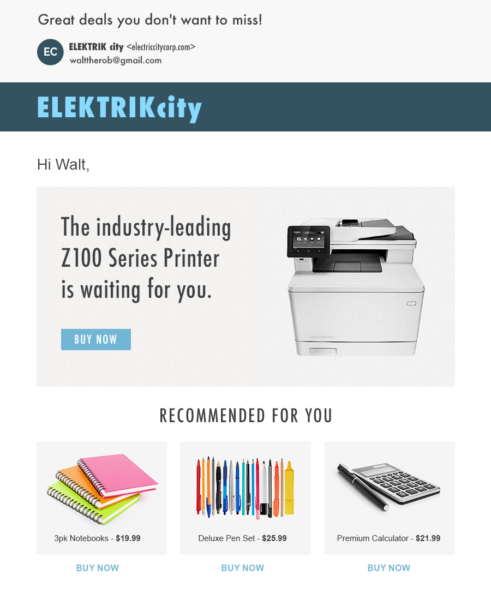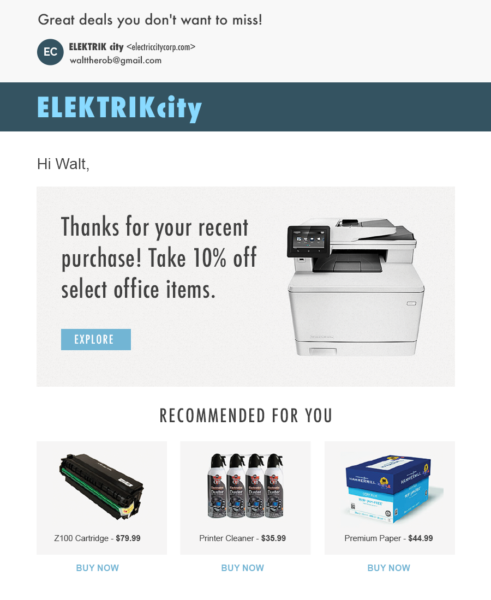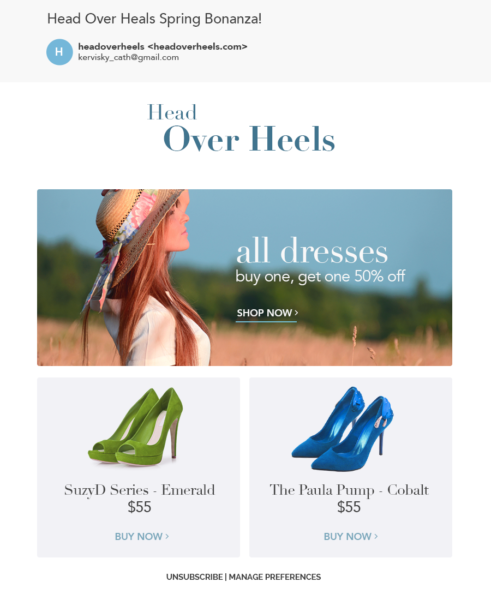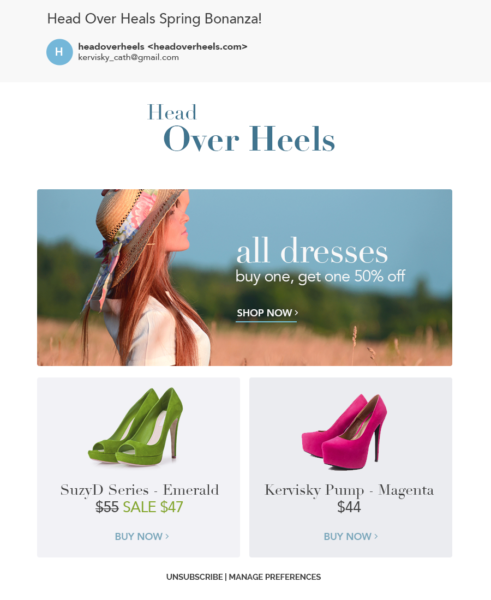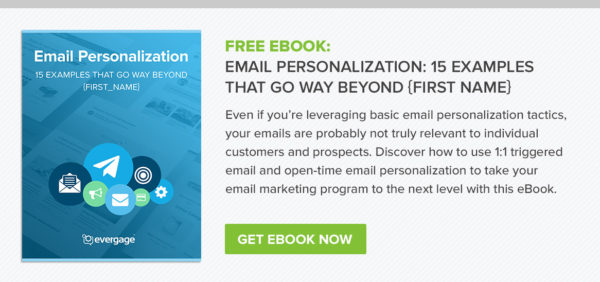As an email marketer, you always want to send highly effective messages. You want your emails to stand out, resonate with your recipients, and deliver value. But no matter how hard you try to send something relevant, you can’t control when your emails are opened. Some people will read your email right away on their phones. Others may check their emails on their desktop in a day, a week or more. And in that timeframe – even if it’s just an hour or less – a lot can change.
Even if your email is as relevant as it could be when you send it, it doesn’t mean that it will still be relevant when it gets opened. What can you do about that? That’s where open-time personalization comes in. Rather than personalize an email at send time, you can personalize it at open time. That way, no matter when the email is opened, it will reflect the most up-to-date information available.
How does open-time personalization work?
Ordinarily, when an email is opened, the recipient’s email client (such as Microsoft Outlook or Gmail) sends a request to a server to provide any image to display. If you are using open-time email personalization, the personalization platform would make a smart decision about what image(s) to show the moment the message is opened (or re-opened). This decision would be based on everything it knows about the recipient, taking into consideration all of that person’s up-to-the-minute behaviors across channels. The decision can also take into account product inventory, catalog changes, geolocation, weather, and more. The resulting personalized in-mail experience could be product recommendations, promotional offers, eBook or video suggestions, or simply informational messages.
Let’s say, for example, that a retailer sends an email containing three product recommendations to a regular customer. Between the time the company sends the email and the moment the customer opens it, the customer has purchased Product 1 via the mobile app, Product 2 went out of stock, and Product 3 dropped in price. When he opens the email, Products 1 and 2 would be substituted with different (but still relevant) recommendations, and Product 3’s price would be updated.
That’s what open-time personalization is all about.
In the rest of this blog post, I’ll explain the four main benefits you can receive from personalizing your emails at open time.
1. Show prospects and customers that you know them
When a company sends me an email that doesn’t make sense to me, I question whether or not they actually know me very well. That may be ok for your occasional shoppers (if you’re a retail company), but it could be upsetting to your loyal shoppers, current customers, or prospects at a critical stage of the buying journey.
Between when you send an email and when it is opened, a person’s circumstances can change. She may have already bought that product, or removed it from her cart — indicating she no longer has no interest in it. She may have originally browsed content in one area of your B2B site, but later started showing interest in a completely different topic. That shift in her preferences should be reflected in the emails you send, otherwise it will seem as if you don’t really understand her.
Open-time personalization allows you to show your recipients that you know them by not sending them content that is clearly irrelevant or behind-the-times.
For example, you may originally send an email reminding a shopper about a printer he was interested in the last time he was on your site.
But, if he has already purchased the printer by the time he sees the email (or if he reopens it later), it can be updated to thank him for his purchase and suggest complementary items he may be interested in.
2. Stop confusing your customers and prospects
Sometimes an inappropriate email can be confusing. Let’s say you signed up for a webinar on a topic you wanted to learn more about. Later, you received an email suggesting you sign up for that same webinar. Is this a mistake? Or did your initial registration not go through? Should you sign up again just to be safe? It’ll make you stop to think about it.
You don’t want your prospects or customers to be confused by your emails. By updating the content of your emails at open time, you can account for anything that may have changed that could confuse your recipients. It sounds obvious, but if someone has already signed up for a particular event or offer, don’t promote it to her! If she has already requested a demo of your product, don’t include that in a CTA in future emails to her. Not only do you risk confusing her, you waste an opportunity to promote something else.
3. Never promote anything that’s no longer available
It can feel like a bait-and-switch when you click on a recommended product in an email only to find that it’s out of stock. Yet it’s completely possible that a product that was in stock when you sent the email is no longer available when the recipient opens it.
You can avoid frustrating your customers by leveraging open-time personalization. In this case, any product that goes out of stock can be replaced by another, relevant product recommendation when the email is opened.
For example, you may send the following email to a shopper interested in heels.
But if the “Paula Pump” sells out, you can replace that recommendation with a similarly relevant one for the recipient (the magenta “Kervisky Pump” in the image below).
And it’s not just limited to products. If you send an email containing a promotion for a sale that is no longer taking place when the email is opened, you can swap it out for another relevant promotion. If for some reason you have had to remove or retire a blog post or eBook from your site, any recommendation for it can be swapped with other relevant content instead.
With this approach, you can make sure you’re only promoting items — whether those items are products, promotions, content, etc. — that are still available on your site.
4. Accurately reflect information that can change regularly
You may encounter moments when you want to include dynamic information in an email — meaning some sort of content that changes frequently. The most obvious instance is pricing. A product’s price could change between when an email is sent and when it is opened. Open-time personalization allows you to ensure that whatever product recommendations you display in your emails, the price is always up to date (for an example of this, refer back to the shoe example above. The “SuzyD Series” shoe price drops between the first image to the next).
But there are other instances where content isn’t static that aren’t immediately obvious. The weather is a good example (I included a good real-world example of this in my last email-related blog post). The weather changes all the time, so if for any reason you want to include the weather or any weather-related content in your email, open-time personalization will allow you to ensure that it is always accurate when the email is opened.
You may also consider open-time personalization for things like betting odds or fundraising efforts that will change as time goes on. If you’re trying to raise money for something, you may want to include the results of the efforts so far. Open-time personalization allows you to display the most up-to-date progress so the email is always relevant, no matter when it is opened.
Final Thoughts
There’s no reason for your emails to be outdated or irrelevant when they’re opened. Think about it this way: open rates are often low enough as it is. When you get someone to open your email, you don’t want to waste your chance to provide value to that person in the moment. Open-time personalization allows you to ensure you’re always showing the most relevant content in that moment.
